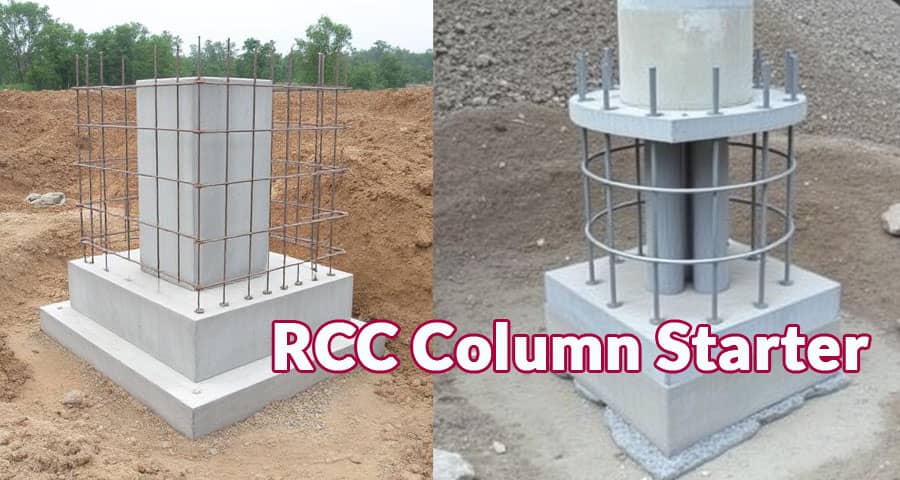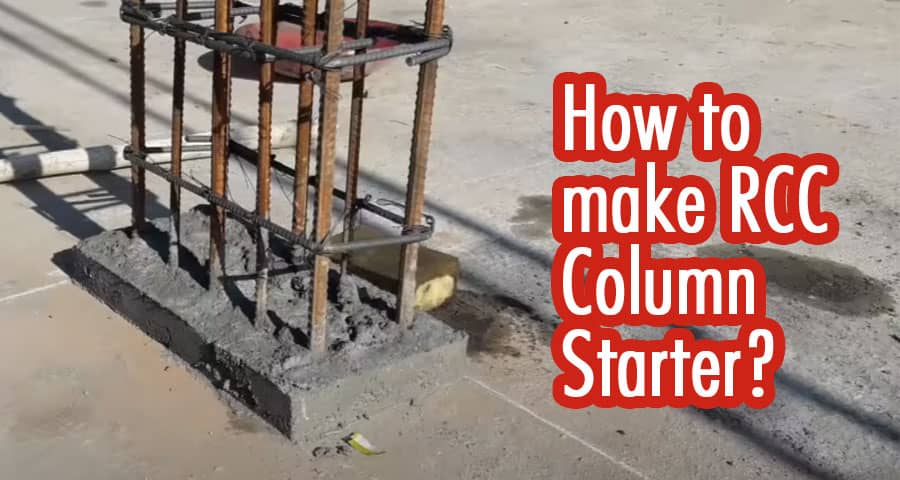How to make RCC Column Starter?

What is an RCC Column Starter?
An RCC column starter is a concrete structure that is used to support the load of an RCC column. It is typically made up of a concrete base and a steel reinforcement cage. The concrete base provides a strong foundation for the column, while the steel reinforcement cage helps to prevent the column from buckling under load.
Why is an RCC Column Starter Needed?
RCC columns are typically very strong, but they can be susceptible to buckling under load. This is because columns are long and slender, which makes them more prone to buckling. An RCC column starter helps to prevent buckling by providing a strong foundation for the column and by reinforcing the column with steel.
How to Make an RCC Column Starter
To make an RCC column starter, you will need the following materials:
- Concrete
- Steel reinforcement cage
- Formwork
- Concrete mixer
- Vibrator
- Water
Step 1: Prepare the Site
The first step is to prepare the site for the column starter. This involves clearing the area of debris and leveling the ground.
Step 2: Lay the Formwork
The next step is to lay the formwork for the column starter. The formwork should be made of plywood or other sturdy material. The formwork should be built to the exact dimensions of the column starter.
Step 3: Place the Concrete
The next step is to place the concrete in the formwork. The concrete should be poured in layers and each layer should be vibrated to remove any air bubbles.
Step 4: Install the Steel Reinforcement Cage
The next step is to install the steel reinforcement cage in the concrete. The steel reinforcement cage should be placed in the center of the concrete and should be secured in place with wire ties.
Step 5: Allow the Concrete to Cure

The final step is to allow the concrete to cure. The concrete will need to cure for at least 24 hours before the formwork can be removed.
Tips for Making an RCC Column Starter
- Use high-quality concrete.
- Make sure the concrete is vibrated thoroughly.
- Install the steel reinforcement cage properly.
- Allow the concrete to cure for the full amount of time.
Conclusion
Making an RCC column starter is a relatively simple process. By following the steps outlined above, you can create a strong and durable column starter that will help to support your RCC columns.
Here are some additional tips for making an RCC column starter:
- Use a concrete mixer to mix the concrete. This will ensure that the concrete is mixed evenly.
- Use a vibrator to vibrate the concrete. This will help to remove any air bubbles from the concrete.
- Install the steel reinforcement cage in the center of the concrete. This will help to distribute the load evenly.
- Allow the concrete to cure for at least 24 hours before the formwork can be removed. This will allow the concrete to harden and become strong.
Please watch the following short video for How to make RCC Column Starter?
